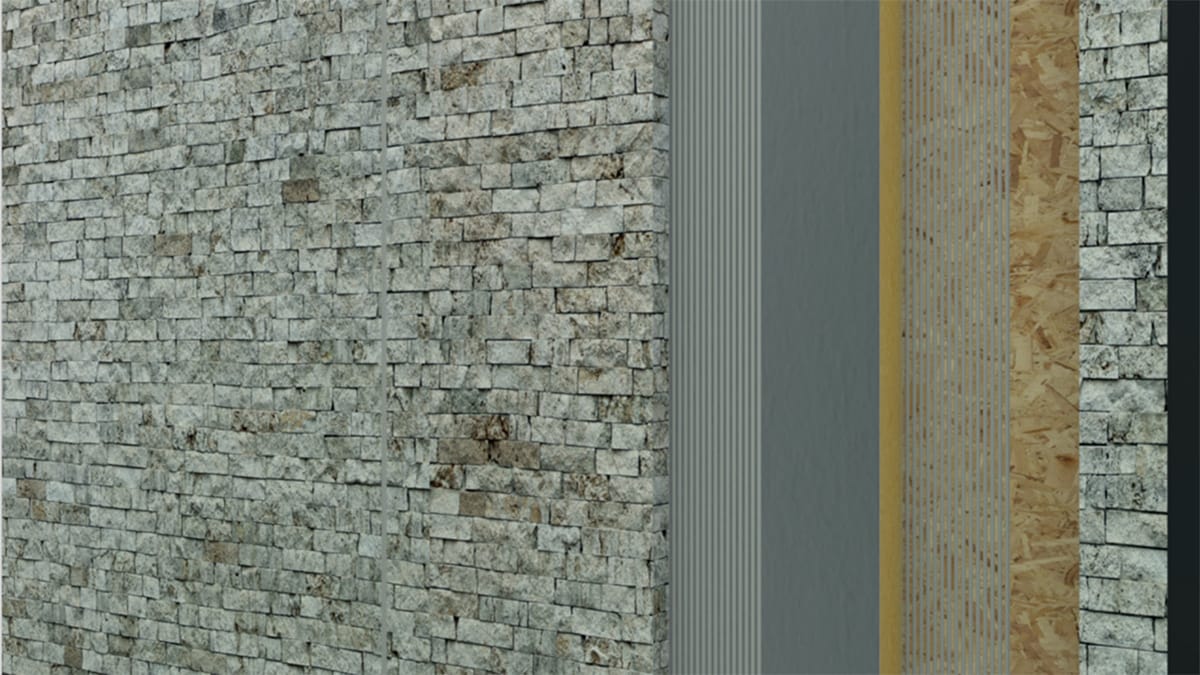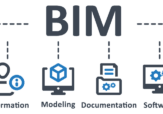The Use of MS POLYMER™-Based Sealants and Adhesives in Modular Building

Luc Peeters is the R&D Manager, Performance Polymer Solutions Vehicle | MS Polymer Division at Kaneka.
One of the major advantages of modular building is construction in a factory under controlled conditions. In many cases, an assembly line system is implemented that moves the modules through the factory depending on the construction stage. Hence, the modules are subjected to more movement and vibrations compared to traditional construction methods. In the final stage, the modules are transported on a truck to the building site, again subjecting the modules to vibrations and shocks. It can result in cracking of joints and adhesives leading to cracking or falling of tiles or other materials. As a result, a lot of assembly and finish work has to be done on the building site.
MS POLYMERTM, a silane modified polymer (SMP), was developed in Japan as base resins for sealants and joint fillers to protect buildings against earthquakes—simply put: the SMP provides a high elongation and elastic recovery to cope with vibrations and movement of the building. Since the rollout of that initial product, additional adhesives were specifically developed for tiling—for instance, in railway stations where cementitious adhesives will crack over time and tiles can fall off the walls.
Keeping these properties in mind, the SMP-based adhesives and sealants are ideal products for the construction of modular buildings and provide solutions for both exterior and interior adhering and sealing.

Fig. 1 Cut-through of the outer wall

Fig. 2 Cut-through of a flat roof
Exterior Applications of SMPs
Exterior walls can vary widely, but many consist of different layers starting with a wooden or fiber cement panel on which insulation panels are adhered. These connections can be made stronger by using SMP panel bonding adhesive. The wall can then be made even more air- and water-tight by sealing it off with a panel adhered with a tackified SMP foil adhesive. The final finishing of the wall can be done with stone strips, as conventional bricks are too heavy, or wooden or composite panels by using a SMP stone strip adhesive or panel bonding adhesive or a high tack adhesive. To prevent any cracking of the outer wall, an expansion joint with a low modulus sealant can be applied.
When we then take a look at the roof, which are often flat in modular buildings, again often find wooden panels with insulation panels adhered on top with an SMP-based insulation or high tack adhesive. For covering large areas there are already sprayable adhesives available. The roof can then be finished with an EPDM, TPO, or bitumen membrane which can all be adhered with SMP-based adhesives. The solid membrane can also be substituted with liquid applied membrane which can be applied with a roller or squeegee.
Any pipes or gutters can still be sealed with a detailed roof sealer.
Interior Applications of SMPs
Interiors can vary widely, but there are many ways the SMPs can help secure and seal various components. Floors, for example, are often based on panels with a wood laminate, parquet, or LVT floor adhered. For all these types of flooring, specific SMP based adhesives are available.
To prevent cracking and distribute vibrations and movements, elastic joint sealants with excellent recovery are required for sealing the skirt board, but also for sealing the joints between the plaster, wood-, or cement fiber-based panels.
For all the assembly of racks, sinks, etc., general purpose adhesives and sanitary sealants are available.
For wet areas such as bathrooms and showers, specially-designed SMP products need to be used. One option is a watertight coating based on newly-developed low viscosity SMP grades which can be applied under tiles. Kaneka has also developed a new reactive tile adhesive that passes EN-12004-RT2, which up to now was only possible with epoxy adhesives. To enable even more time saving, a 2-in-1 coating was developed which combines the watertight coating and the tile adhesive in one product.
Testing the Strength of SMPs
During assembly, the modules are moved through the factory, and once construction is complete, the modular building is transported by truck to the building site. During this movement and transportation process, the building is exposed to vibrations and shocks, which can result in issues such as cracked or detached tiles.
To demonstrate that elastic SMP-based sealants and adhesives can effectively prevent tile cracking and detachment, a truck transport simulation was conducted in accordance with ASTM D4169-23. In this test, a test piece with tiled panels was placed on a vibration table and subjected to a controlled vibration cycle.
The cycle included:
- 15 minutes of truck vibration at low level (random, 1–200 Hz, control: 0.40 Grms)
- 15 minutes at medium level (random, 1–200 Hz, control: 0.54 Grms)
- 5 minutes at high level (random, 1–200 Hz, control: 0.70 Grms)
This test cycle simulates the vibrations experienced over a 400 km truck journey in real-world conditions.
The test piece consisted of two OSB panels and two fiber cement boards. Four different adhesives were applied, three cementitious and one SMP-based. On each type of board, eight white ceramic tiles (20 cm x 20 cm) were adhered using the different adhesives without applying any primer (see Fig. 4).
The results shown in table 1 show that the SMP-based adhesive offers the best performance for modular building applications. It maintains strong adhesion even on challenging substrates such as OSB panels, without the need for a primer, and withstands long-distance transportation without compromising the integrity of the tile installation.

Table 1: Test results of truck transport simulation (ASTM D4169-23)

Fig. 3 Cut-through of a shower wall

Fig. 4 Picture of the assembled test piece

Fig. 5 Test piece during the vibration test
Conclusion
After taking a closer look at a modular building process, it becomes clear that both the interior and exterior can be completely constructed and assembled by using MS POLYMERTM-based sealants and adhesives. These products combine flexibility and elastic recovery with excellent adhesion to different substrates and have already shown their usefulness in traditional construction. Now it’s time for them to be put to use in the modular construction industry.
More from Modular Advantage
Resia: Breaking All the Rules
Resia Manufacturing, a division of U.S.-based Resia, is now offering prefabricated bathroom and kitchen components to industry partners. Its hybrid fabrication facility produces more precise bathroom and kitchen components (modules) faster and at lower cost than traditional construction. Here’s how Resia Manufacturing does it.
How LINQ Modular Innovates to Bring Modular To The Market in the UAE and Beyond
LINQ Modular, with an office and three manufacturing facilities in Dubai, is a modular firm based in United Arab Emirates. The company is on a mission: to break open the housing and construction markets in the Gulf Cooperation Council (GCC) area with modular.
ModMax: Redefining Modular Construction with Confidence and Precision
ModMax was born out of frustration—frustration with five persistent pain points in modular construction: Permitting bottlenecks. Production delays. Rigid designs. Disconnect between “the office” and the field. Lack of transparency and communication.
LifeArk: Disaster-Resilient Housing from Recycled Plastic and 100-year-old Technology
Wee compares LifeArk’s housing units to Yeti coolers, as they are built similarly. Each component takes 15 to 20 minutes to manufacture, has an R-value of 40, and includes molded slots and chases for wiring, plumbing, fire sprinklers, and other utilities.
Building the Future of Modular Edge Infrastructure
The edge data center market is expanding rapidly, driven by the surge in AI workloads, IoT adoption, and the need for localized compute power. In these environments, sustainability, scalability, and reliability are non-negotiable. Cooling is among the most complex challenges for operators—and one of the most decisive factors in long-term success.
Accelerating Light-Gauge Steel Construction: A Semi-Automated Digital Workflow for Off-Site Projects
For construction professionals, the message is clear. By adopting semi-automation and digitalization, companies can deliver projects faster, more accurately, and more profitably, while also building stronger collaboration across teams. The approach is not about replacing people with machines, but about empowering people with better tools and processes.
Why Modular Data Centers Are Gaining Momentum
Artificial intelligence, high-performance computing, and edge applications push the limits of traditional “stick-built” data centers. They take years build, often struggle with high density workloads, and aren’t optimized for deployments near end users. Modular data center platforms are purpose-built to address these challenges, offering flexibility and scalability to adapt to evolving technologies, while opening new opportunities for the modular construction industry.
Supply Chain Innovation in Action: 5 Habits Every Modular Leader Should Practice
By applying these principles to supply chain practices — collaborative planning, strategic procurement, scenario modeling, digital tools, and transparent forecasting — construction leaders can build value chains that are not just efficient and agile, but truly innovative.
Exploring the Role of Modular Integrated Construction (MiC) in Advancing Circular City Principles – A Survey of Stakeholder Perspectives
The survey findings highlight the significant potential of Modular integrated Construction (MiC) in advancing the development of circular cities. By reducing costs, accelerating construction timelines, and minimizing waste generation, MiC offers a promising approach to sustainable urban development.
From BIM to Execution: Turning a “Pretty Picture” into a Single Source of Truth for Off-Site Construction
When implemented properly, BIM becomes the company’s digital backbone: connecting teams, standardizing information and transforming data into actionable insights. It is the key to achieving lean, predictable operations where all phases – design, planning, procurement and project execution are empowered by a single source of truth.










